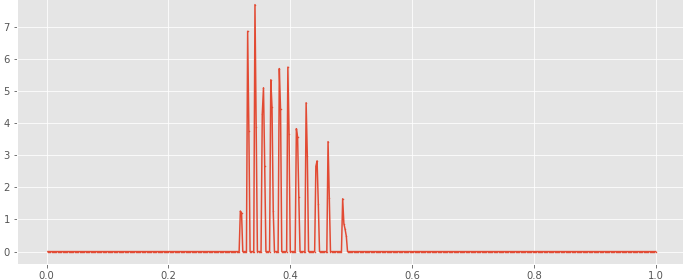Nanosystems: Phys. Chem. Math., 2022, 13 (4), 365–371
On Keller-Rubinow model for Liesegang structure formation
Timur N. Topaev – ITMO University, St. Petersburg, 197101, Russia; topaev-timur@mail.ru
Anton I. Popov – ITMO University, St. Petersburg, 197101, Russia; popov239@gmail.com
Igor Y. Popov – ITMO University, St. Petersburg, 197101, Russia; popov1955@gmail.com
Corresponding author: Anton I. Popov, popov239@gmail.com
DOI 10.17586/2220-8054-2022-13-4-365-371
ABSTRACT We consider a chemical process, the precipitate of which will be represented by a structure in the form of rings. The study and modeling of this process is relevant, since it becomes possible to form micro- and nanostructures based on this approach. We consider the version of the one-dimensional model of Keller and Rubinow which describes the formation of Liesegang rings due to the Ostwald supersaturation. The dependencies of the results obtained on the initial conditions and the model parameters were studied numerically.
KEYWORDS nanostructures, Liesegang rings, Keller-Rubinow model, chemical reaction modeling.
FOR CITATION Topaev T.N., Popov A.I., Popov I.Y. On Keller-Rubinow model for Liesegang structure formation. Nanosystems: Phys. Chem. Math., 2022, 13 (4), 365–371.
[In Russian] Т.Н. Топаев, А.И. Попов, И.Ю. Попов
О модели Келлера-Рубинау для образования структур Лизеганга
АННОТАЦИЯ Рассмотрен химический процесс, осадок в котором представлен структурой в форме колец. Изучение и моделирование этого процесса актуально, так как становится возможным формирование микро- и наноструктуры на основе данного подхода. Рассмотрен вариант одномерной модели Келлера и Рубинау, который описывает образование колец Лизеганга из-за пересыщения Оствальда. Исследованы численно зависимости полученных результатов от начальных условий и параметров модели.
КЛЮЧЕВЫЕ СЛОВА наноструктуры, кольца Лизеганга, модель Келлера-Рубинау, моделирование химических реакций.
